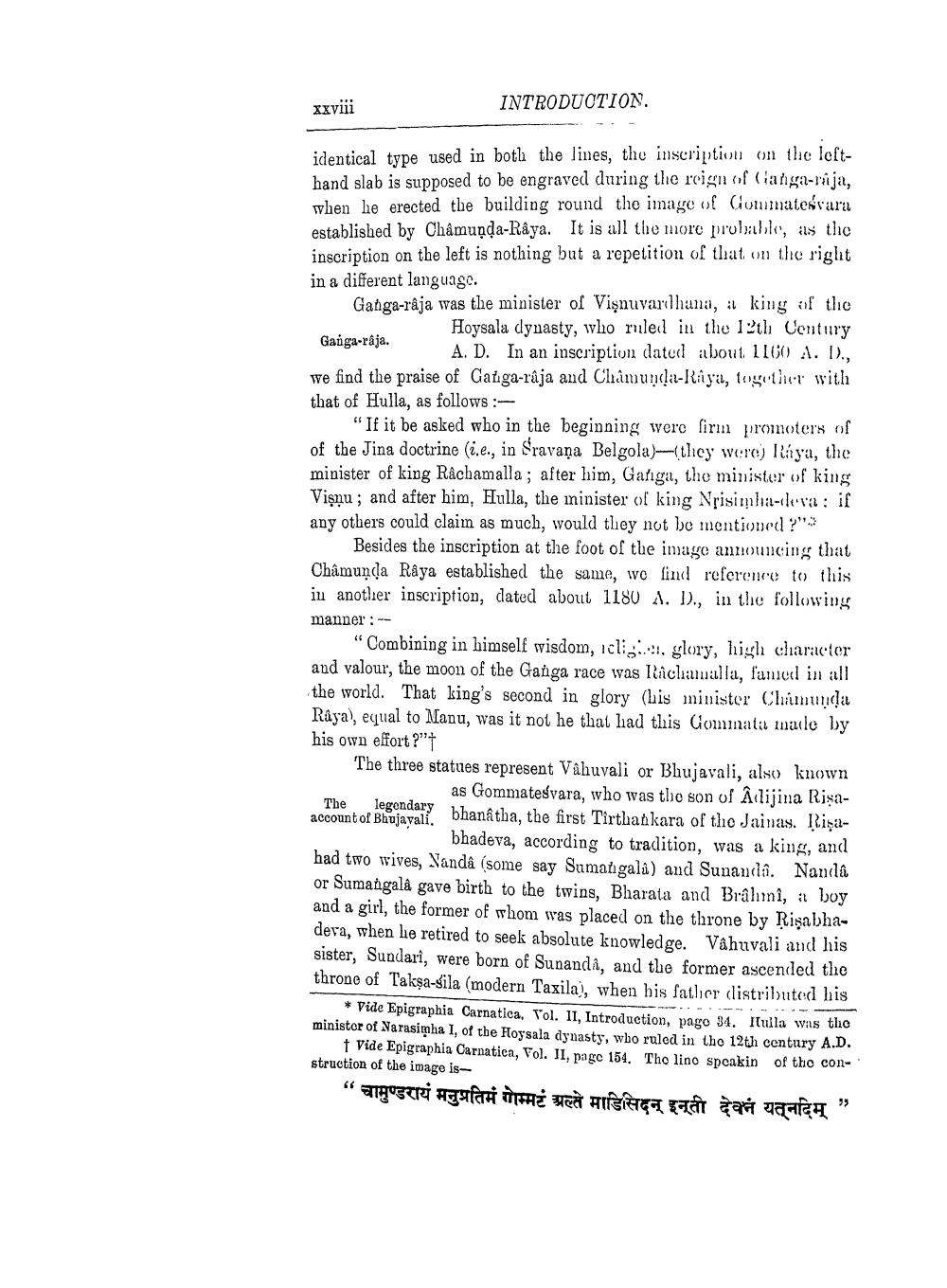________________
xxviii
INTRODUCTION.
identical type used in both the lines, the inscription on the lefthand slab is supposed to be engraved during the reign of (angarija, when he erected the building round the image of Gommatesvara established by Châmuņda-Raya. It is all the more probable, is the inscription on the left is nothing but a repetition of that on the right in a different language. Ganga-raja was the minister of Vişnuvardhana, il king of the
Hoysala dynasty, who rulecl in the 19th Century Ganga-raja.
. A. D. In an inscription dated about 1100 A. 1)., we find the praise of Carga-râja and Chamunda-kaya, together with that of Hulla, as follows :
"If it be asked who in the beginning were firm promoters of of the Jina doctrine (i.e., in Sravana Belgola)--they were) Raya, the minister of king Râchamalla; after him, Ganga, the minister of king Vişnu; and after him, Hulla, the minister of king Nrisimia-leva: if any others could claim as much, would they not be mentioned?"
Besides the inscription at the foot of the image announcing that Châmunda Râya established the same, we find reference to this iu another inscription, dated about 1180 A. D., in the following manner :--
"Combining in himself wisdom, ieli , glory, high character and valour, the moon of the Ganga race was Machamalla, fanıcd in all the world. That king's second in glory (his minister Chamunda Râya), equal to Manu, was it not he that liad this Commata made by his own effort ?"' The three statues represent Vahuvali or Bhujavali, also known
as Gommatesvara, who was the son of Alijina RiņaThe legendary account of Bhujavali bhanatha, the first Tirthankara of the Jainas. Rira
bhadeva, according to tradition, was a king, and had two wives, Nanda (some say Sumangala) and Sunanda. Nanclä or Sumangala gave birth to the twins, Bharata and Brâhınî, a boy and a girl, the former of whom was placed on the throne by Rişabhadera, when he retired to seek absolute knowledge. Vahuvali and his sister, Sundari, were born of Sunanda, and the former ascended the throne of Takşa-bila (modern Taxila), when his father distributed his
* Vide Epigraphia Carnatica, Vol. 11, Introduction, pago 34. Itulla was the minister of Narasimha I, of the Hoysala dynasty, wbo ruled in tho 12th century A.D.
Vide Epigraphia Carnatica, vol. II, page 154. Tho lino spcakin struction of the image is
of the con"चामुण्डरायं मनुप्रतिमं गोम्मटं अल्ते माडिसिदन इन्ती देवनं यत्नदिम् "




